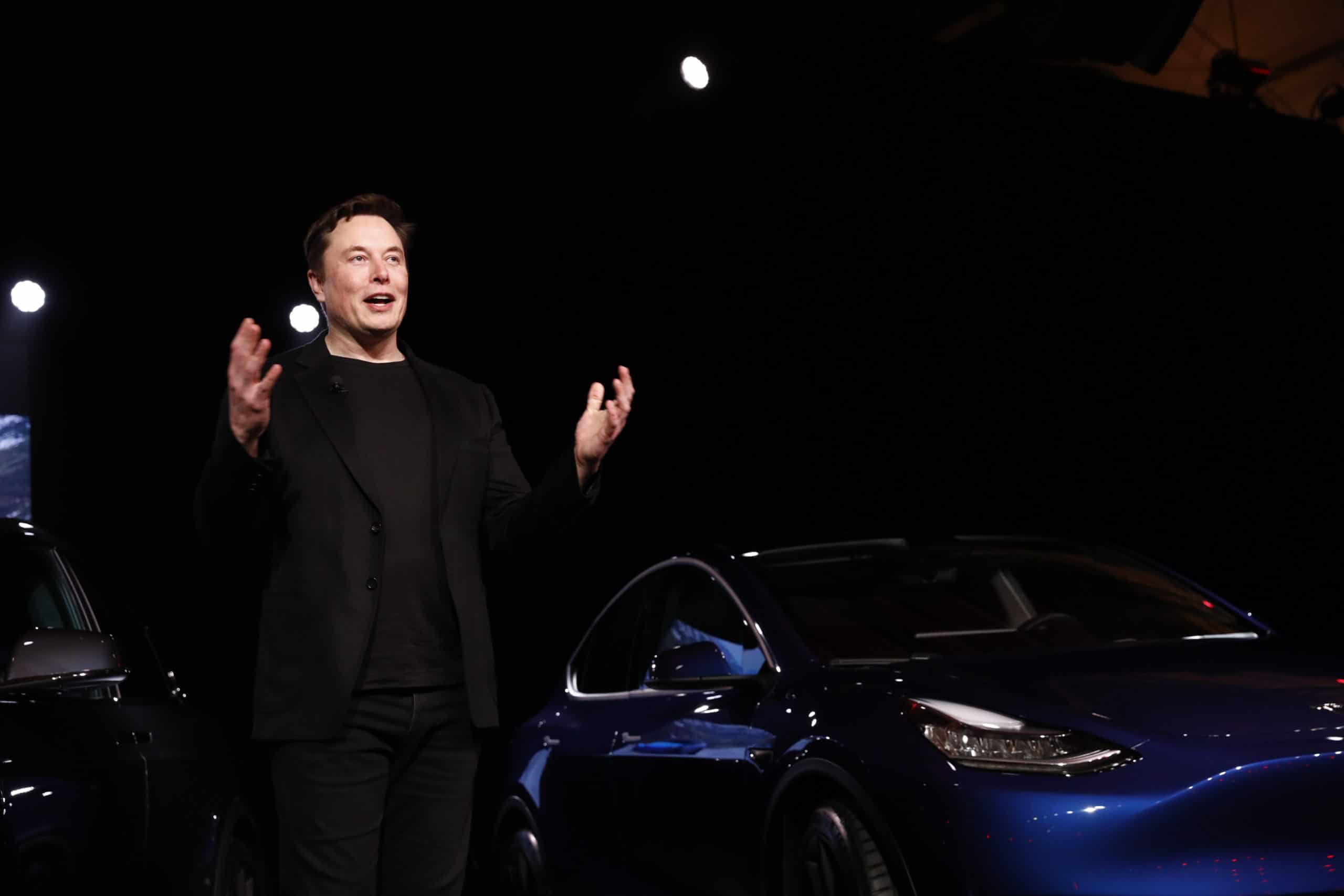Elon Musk intends to expand Tesla’s TSLA -5.6% lead in electric vehicles by shifting to a new, bigger type of lithium-ion cell that’s 56% cheaper and by massively increasing battery production to create a huge competitive advantage. But it’s going to take a few years to make them at high-volume and the manufacturing system needed to do that isn’t quite ready.
The billionaire entrepreneur, who has hyped the electric-car maker’s “Battery Day” for months, used the event staged in the parking lot of Tesla’s Palo Alto, California, headquarters to unveil the 4680 cell company engineers developed in-house. More than double the size of the current 2170-format cells Tesla uses, the new chemical devices provide five times the energy, 16% more range, and six-times the power, according to Musk and Drew Baglino, senior vice president for powertrain and energy engineering.
Limited production of the new cells has begun at a pilot battery factory in Silicon Valley, though it’s going to take time to ramp up to the terawatt-hour level of output Musk envisions. “It’s probably about a year before we get to the 10-gigawatt-hour annualized rate with the pilot plant, and this is just a pilot plant. The actual production plants will be more on the order of maybe 200-gigawatt hours, maybe more over time.
It’s close to working, but it’s not even now at the pilot plant level.
But he then clarified that are still kinks in the new production system for the 4680 cells. “To be clear, I would like to not say that right now it’s just totally working. It’s close to working, but it’s not even now at the pilot plant level. It is close to working. All I can think it’s fair to say probably it does work, but with not a good … not a high yield.”
While Musk earlier this month had said the event would be “very insane,” he dialed that back on Sept. 21 by noting that Battery Day announcements affect “will not reach serious high-volume production until 2022.” And even as Tesla scales up production of its new cell, it will continue to buy 2170 cells from suppliers Panasonic, LG Chem and China’s CATL.
To accommodate production of its new battery, Tesla plans to build a factory to make cathode material, and it’s switching from the use of graphite in the anode to lower-cost silicon. The company has also acquired rights to source lithium it needs from 10,000 acres in Nevada, though Musk didn’t disclose the location of the property and what’s spending on that operation.
The battery news followed the company’s annual shareholder meeting, done drive-in movie style this year owing to the Covid-19 pandemic, with attendees watching the event from their Tesla vehicles in the company lot. Honks and beeps replaced the cheering for Musk typically heard at company events.
Of note during the annual meeting portion was the consideration of two items proposed by activist Tesla investors who want better disclosure of worker conditions and their treatment as well as a commitment to ensure that all raw materials needed for batteries and other components are sourced ethically. Tesla’s board recommended voting against both measures, and they appear likely to fail.
While the discussion of the new cell was highly detailed, the company’s multiyear timetable for introducing it as well as new advancements in its production system to allow for lower-cost manufacturing, appeared to disappoint investors. Tesla fell about 7% in after-hours Nasdaq NDAQ +1% trading to $394.98, after finishing regular trading down 5.6%.
Battery Day, like most recent Tesla events, was attended mainly by fans of the company. During a concluding Q&A session, there were no questions from either equity analysts or journalists.
By Alan Ohnsman, Forbes Staff
